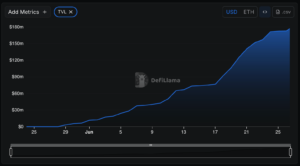Ethereum Developers Remove EVM Object Format from Fusaka Upgrade: A Comprehensive Overview
The Ethereum community is a dynamic ecosystem, constantly evolving to meet the demands of its users and developers. A recent pivotal decision made during the April 28 Ethereum All Core Developers (ACD) call has significant implications for the future of the network. Ethereum developers officially removed the Ethereum Virtual Machine (EVM) Object Format (EOF) from the upcoming Fusaka network upgrade. This decision was driven by technical uncertainties and considerable opposition from the community, highlighting the complexities involved in blockchain development.
Background on EOF
The EVM Object Format was initially proposed as part of a comprehensive overhaul of the Ethereum Virtual Machine (EVM) aimed at simplifying smart contract development. It comprises a set of Ethereum Improvement Proposals (EIPs) focusing on making the development process more efficient and user-friendly for developers. However, as the Fusaka upgrade approaches, critical voices within the community raised concerns about the complexity that EOF would introduce. Many developers believed that it was too intricate for the standard blockchain operations, which need to remain straightforward for mass adoption.
Community Backlash and Technical Concerns
The pushback from the Ethereum community was substantial, indicating a broader sentiment that the EOF was not ready for implementation. Tomasz Stańczak, co-executive director of the Ethereum Foundation, had earlier suggested that EOF would be included in the Fusaka upgrade, scheduled for either the third or fourth quarter of 2025. However, the response from the community led to a reevaluation of its role in the upgrade. Critics argued that adopting EOF could complicate the already complex architecture of Ethereum and detract from essential performance upgrades.
Prioritizing Scalability with PeerDAS
Tim Beiko, Protocol Support Lead at the Ethereum Foundation, articulated the main reason for this decision: to protect the Fusaka upgrade’s timeline. He emphasized that all client teams reached a consensus to prioritize PeerDAS, another major feature aimed at improving Ethereum’s scalability and data availability. This pivot illustrates the necessity of focusing on features that will directly enhance user experience and efficiency. By prioritizing essential upgrades like PeerDAS, Ethereum aims to keep pace with the evolving landscape of blockchain technology.
Coordination Challenges and the Decision Process
Further complicating the EOF debate were the multiple versions being discussed within the ACD. These ongoing discussions stalled progress, as differing opinions led to confusion among the developers about which version of EOF should be pursued. Beiko underscored that a fundamental misunderstanding of the implications of each EOF variant emerged during discussions, indicating that critical clarifications should have occurred earlier in the proposal process. This lack of clarity not only stalled the decision-making process but also brought to light the importance of transparency in technical discussions.
A Future for EOF: Glamsterdam
Despite the decision to remove EOF from the Fusaka upgrade, the Ethereum Foundation has not closed the door on its potential future implementation. Beiko suggested that proponents of EOF could present a more refined case during the upcoming Glamsterdam event. This strategic move allows for the opportunity to reassess EOF’s role based on the highest-impact changes needed for Ethereum as a whole. By creating a dedicated platform for discussion, the Ethereum community can decide if the complexities of EOF are justifiable in the larger context of Ethereum’s goals.
Conclusion: Navigating the Future of Ethereum
The removal of EOF from the Fusaka upgrade highlights the delicate balance between innovation and practicality in the Ethereum ecosystem. As developers navigate the complex landscape of blockchain technology, community feedback plays a crucial role in shaping the future of networks like Ethereum. The prioritization of features like PeerDAS reflects a commitment to scalability and usability, vital for fostering mass adoption. As the Ethereum community looks toward future upgrades, including the potential reintroduction of EOF at Glamsterdam, the pursuit of clarity and consensus will be essential in ensuring that the network continues to thrive in an ever-evolving digital landscape.

















